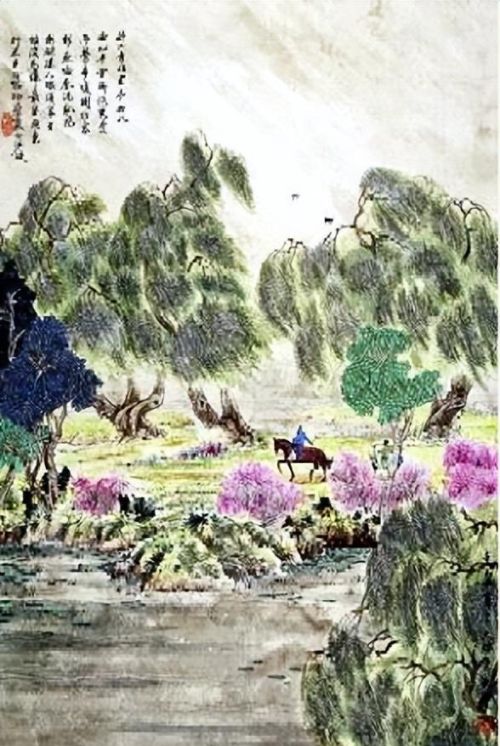春 英文诗歌(英文诗句春天)
古诗词里的春天——中英文诗歌鉴赏(第十二集)
钱塘湖春行
On Qiantang Lake in Spring
白居易
孤山寺北贾亭西,水面初平云脚低。
West of Jia Pavilion and north of Lonely Hill,
Water brims level with the bank and clouds hang low.
几处早莺争暖树,谁家新燕啄春泥。
Disputing for sunny trees, early orioles trill,
Pecking vernal mud in, young swallows come and go.
乱花渐欲迷人眼,浅草才能没马蹄。
A riot of blooms begins to dazzle the eye,
Amid short grass the horse hoofs can barely be seen.
最爱湖东行不足,绿杨阴里白沙堤。
I love best the east of the lake under the sky.
The bank paved with white sand is shaded by willows green.
Pavilion n. 亭阁
Brim n. 边缘,边沿
Dispute v. 争论,竞争
Oriole n. 黄鹂
Trill v. 发出欢快的叫声
Peck v. 啄食,匆匆地亲吻
Vernal adj. 春天的
Riot n. 骚乱,丰富多彩
Dazzle v. 令人眼花缭乱
第一句“孤山寺北贾亭西”,表明方位,直译为West of Jia Pavilion and north of Lonely Hill,“水面初平云脚低”,译文是Water brims level with the bank and clouds hang low,句中and连接的两个谓语动词分别是 level with和 hang low。用现代汉语表达意思是:从孤山寺的北面到贾公亭的西面,湖面春水恰与堤平,白云低垂,同湖面连成一片。第二句“几处早莺争暖树”,译文是Disputing for sunny trees, early orioles trill,这是典型的Doing, S V O 的句式,这个句式在英语中很受欢迎,前面doing表伴随,动作发出者是 句子主语 S,译文字面意思是:争抢暖树的黄鹂们发出欢快的叫声,意象鲜明,节奏欢快,“谁家新燕啄春泥”,译文同样采用Doing, S V O 的句式,Pecking vernal mud in, young swallows come and go,字面意思是:嘴里衔着春泥的新燕往来穿梭。第三句“乱花渐欲迷人眼”,译文A riot of blooms begins to dazzle the eye,“乱花”的“乱”描绘出花朵的五颜六色、争奇夺目,所以使用 riot本意是骚乱这个词,让百花似乎有了动感,“浅草才能没马蹄” ,译文Amid short grass the horse hoofs can barely be seen,字面意思是:马蹄踩下去,刚好能够被浅浅的青草淹没,barely 几乎不,刚好的意思。第四句“最爱湖东行不足”,“行不足”是百游不厌的意思,其实与“最爱”意思重复,所以译文I love best the east of the lake under the sky便不再翻译出“行不足”,确补充了 under the sky,为了与上一句末尾的eye押韵,“绿杨阴里白沙堤”,译文是The bank paved with white sand is shaded by willows green,是一个被动语态的句子, be shaded by是被遮盖的意思,the bank后面的paved with white sand 是一个过去分词短语做形容词修饰The bank,willows green,把形容词修饰语green放句尾,主要是为了与第三句末尾的seen构成押韵。

今天的古诗词鉴赏到这里,感谢您的聆听!
(迎泽区文旅局供稿)
温馨提示:通过以上关于古诗词里的春天——中英文诗歌鉴赏(第十二集)内容介绍后,相信大家有新的了解,更希望可以对你有所帮助。